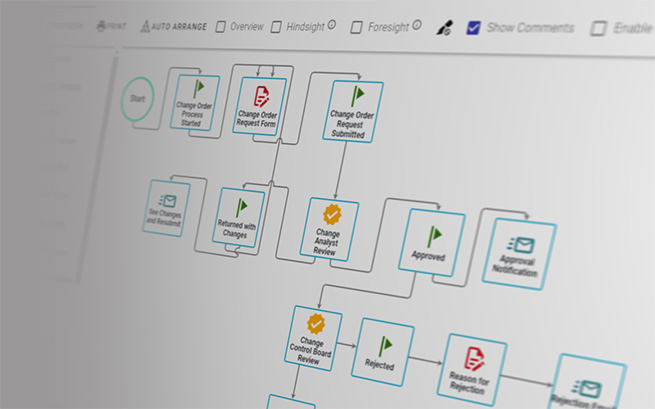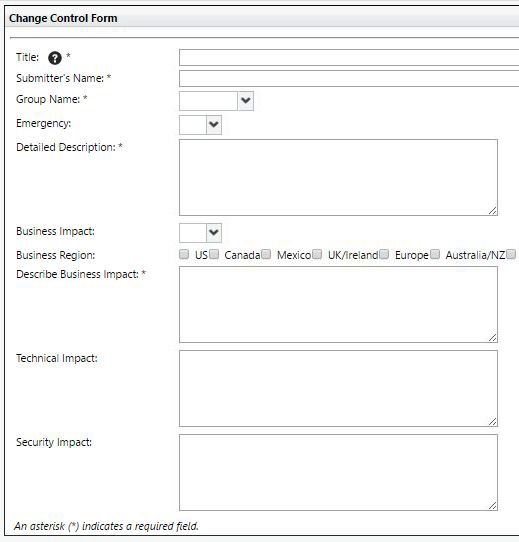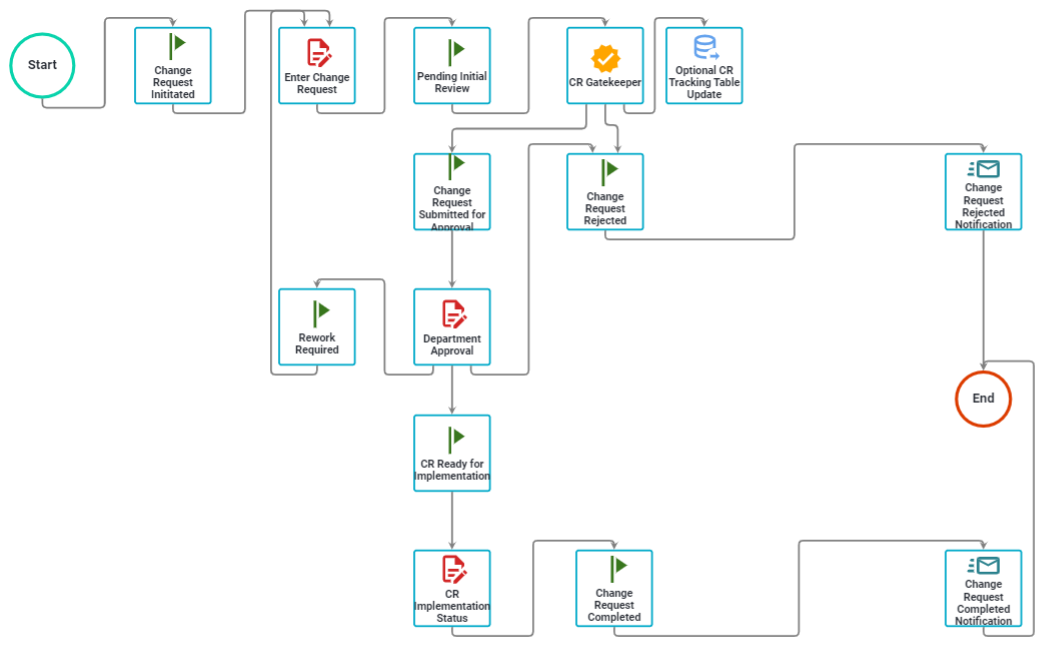
What Is a Change Control Process?
What is change control? Change control is a formal method for managing change requests to a project, product, or anything else that is subject to change.
Change control processes ensure projects stay on track and scope creep is held in check. Requests for changes can include software, employee status, and project plans. Regardless of the use case, change activities can be subject to confusion, faults, and disruption without a formal, reliable change control process. In addition, change management issues can multiply and wreak havoc on the process.
Change control process automation creates a consistent, systematic, and predictable way of managing change requests. By automating the change request process, the risk is reduced, and efficiency is greatly increased.
By defining and automating the controls and policies involved in project changes, project team members have a reliable way of ensuring project scope is not compromised. Simply standardizing (and centralizing) the method for receiving, reviewing, and implementing change requests can positively impact project performance and outcomes.
So what is the benefit of change control to an organization? Ultimately, using a proper change control process will make projects more effective and efficient, helping them stay on time and under budget without additional scope creep ballooning costs.
Managing Change Requests
Three things need to be defined to manage change requests in an automated fashion.
Collection

Change request collection is managed through forms and documents. Forms are built to include all relevant information that needs to be collected to process a request. This could consist of category, importance, impact, complexity, etc. Documents can be attached to the form to include additional information, but it’s best practice to capture as much information as possible in the form itself.
Workflow

When a request is submitted, how should it be routed? Is it routed based on form information (e.g., requests marked as “High Importance” follow a fast track), or are all requests handled the same way? What are the milestones and sign-off points? Can they be returned to the requester for additional information? These and many other aspects should be defined before building automation.
What parts of change assessment and change planning should be part of the workflow? For instance, the change request might start with an assessment team and then, if accepted, proceed to the planning team. A form could capture the assessment team’s recommendation, risk level, justification, and approval, which is then passed along with the original request to the planning team. The planning team’s estimate, regression plan, and resource allocations could then be passed to the Implementation team.
Reporting

Whatever reporting and analysis needs to be done should be communicated before building any automation. This way, the process can be made with the end reporting goals in mind. For instance, if it’s critical to capture the time between request stages, process automation software can be set up to measure the time between specific steps. If the reporting goals measure which departments submit the most requests, then “Department” needs to be captured in the request form. Accounting for these reporting expectations midstream can prevent capturing a complete picture.
Change Control Process Example
In this relatively straightforward example of a change control process automation, we show a Change Control Form and the underlying process. Note that the option of “Emergency” is included in the form, which drives the workflow after “Pending Approval” in the flowchart.
 Change Control Form
Change Control Form
What Is a Change Control Solution for Your Business?
If your business or department is having difficulties managing change requests of any kind, Nutrient Workflow can quickly provide the standardization and automation you need. For a live, customized demonstration of our software, please request a demo. One of our representatives will respond quickly and set up a time.
Additional Resources
-
10 essential elements of change control management (TechTarget)
-
Maximize Benefit. Minimize Risk. Planning for IT Change Control (IT Toolkit)
-
4 Steps to Effective Change Control (Dice IT Careers)
Interested in Automating Your Change Control Process?
We have a variety of resources to help you on your journey to an automated change workflow.
-
Workflow Tools and eBooks
-
Request a Live Demonstration






